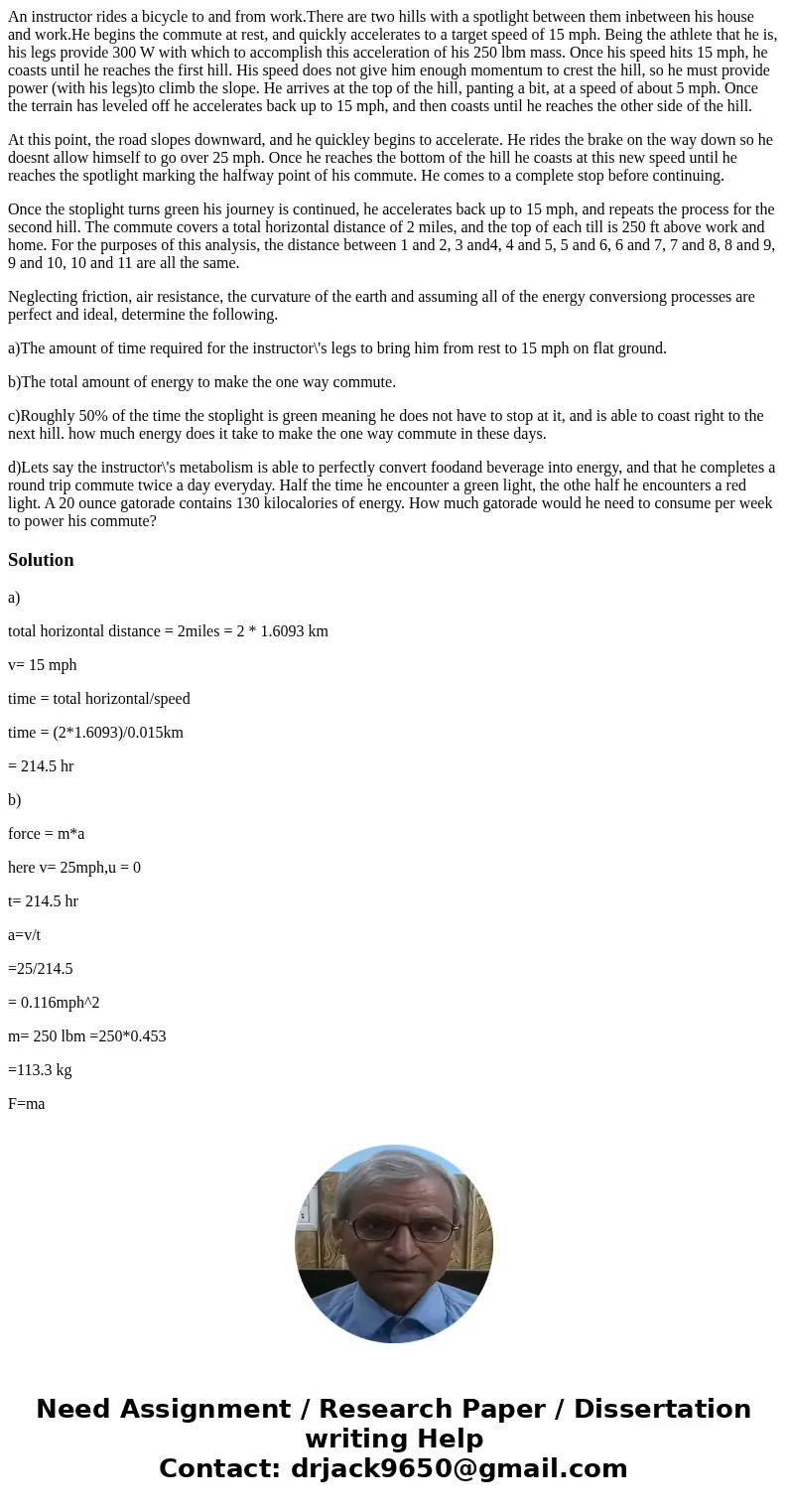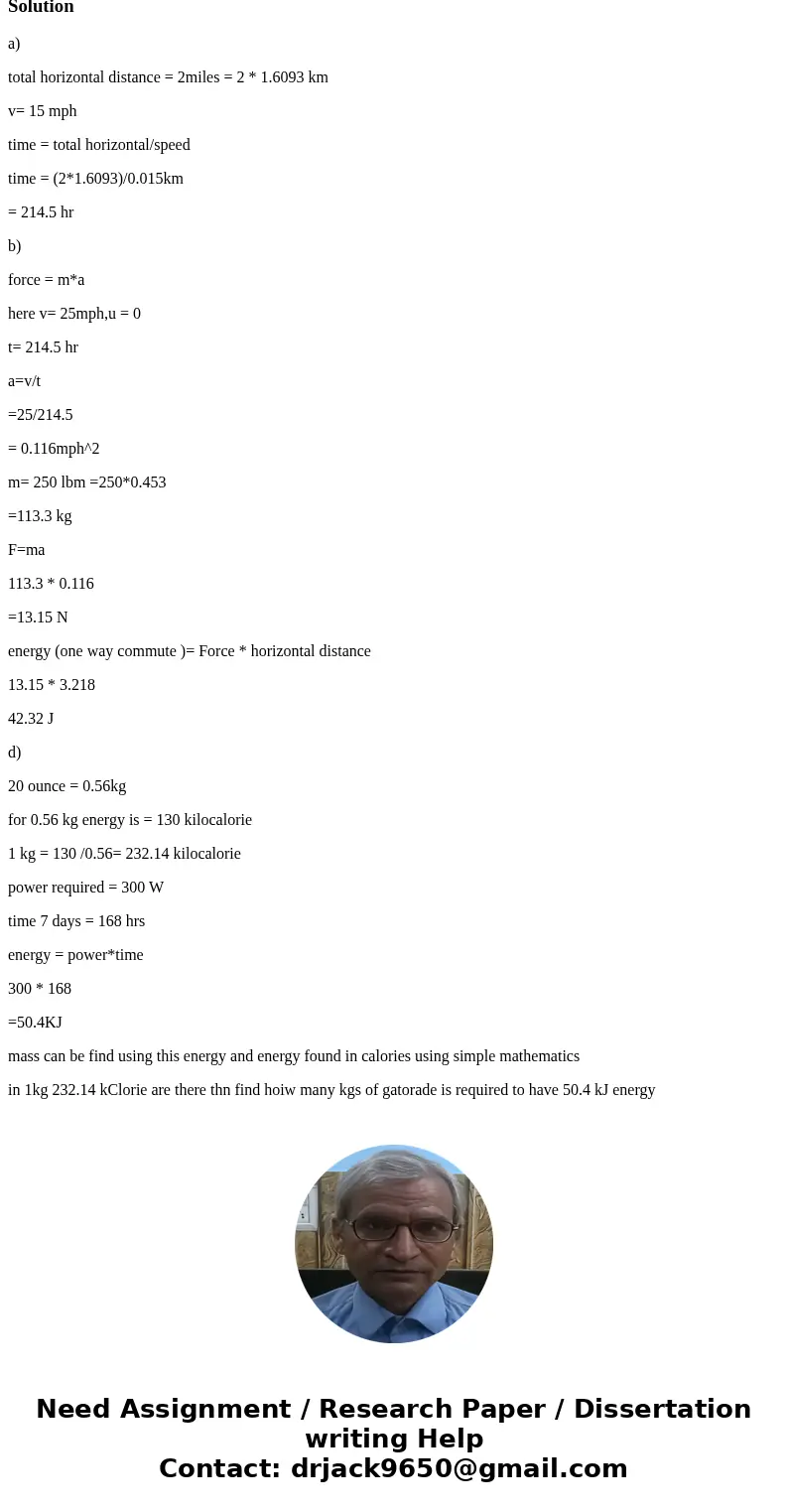An instructor rides a bicycle to and from workThere are two
An instructor rides a bicycle to and from work.There are two hills with a spotlight between them inbetween his house and work.He begins the commute at rest, and quickly accelerates to a target speed of 15 mph. Being the athlete that he is, his legs provide 300 W with which to accomplish this acceleration of his 250 lbm mass. Once his speed hits 15 mph, he coasts until he reaches the first hill. His speed does not give him enough momentum to crest the hill, so he must provide power (with his legs)to climb the slope. He arrives at the top of the hill, panting a bit, at a speed of about 5 mph. Once the terrain has leveled off he accelerates back up to 15 mph, and then coasts until he reaches the other side of the hill.
At this point, the road slopes downward, and he quickley begins to accelerate. He rides the brake on the way down so he doesnt allow himself to go over 25 mph. Once he reaches the bottom of the hill he coasts at this new speed until he reaches the spotlight marking the halfway point of his commute. He comes to a complete stop before continuing.
Once the stoplight turns green his journey is continued, he accelerates back up to 15 mph, and repeats the process for the second hill. The commute covers a total horizontal distance of 2 miles, and the top of each till is 250 ft above work and home. For the purposes of this analysis, the distance between 1 and 2, 3 and4, 4 and 5, 5 and 6, 6 and 7, 7 and 8, 8 and 9, 9 and 10, 10 and 11 are all the same.
Neglecting friction, air resistance, the curvature of the earth and assuming all of the energy conversiong processes are perfect and ideal, determine the following.
a)The amount of time required for the instructor\'s legs to bring him from rest to 15 mph on flat ground.
b)The total amount of energy to make the one way commute.
c)Roughly 50% of the time the stoplight is green meaning he does not have to stop at it, and is able to coast right to the next hill. how much energy does it take to make the one way commute in these days.
d)Lets say the instructor\'s metabolism is able to perfectly convert foodand beverage into energy, and that he completes a round trip commute twice a day everyday. Half the time he encounter a green light, the othe half he encounters a red light. A 20 ounce gatorade contains 130 kilocalories of energy. How much gatorade would he need to consume per week to power his commute?
Solution
a)
total horizontal distance = 2miles = 2 * 1.6093 km
v= 15 mph
time = total horizontal/speed
time = (2*1.6093)/0.015km
= 214.5 hr
b)
force = m*a
here v= 25mph,u = 0
t= 214.5 hr
a=v/t
=25/214.5
= 0.116mph^2
m= 250 lbm =250*0.453
=113.3 kg
F=ma
113.3 * 0.116
=13.15 N
energy (one way commute )= Force * horizontal distance
13.15 * 3.218
42.32 J
d)
20 ounce = 0.56kg
for 0.56 kg energy is = 130 kilocalorie
1 kg = 130 /0.56= 232.14 kilocalorie
power required = 300 W
time 7 days = 168 hrs
energy = power*time
300 * 168
=50.4KJ
mass can be find using this energy and energy found in calories using simple mathematics
in 1kg 232.14 kClorie are there thn find hoiw many kgs of gatorade is required to have 50.4 kJ energy


 Homework Sourse
Homework Sourse